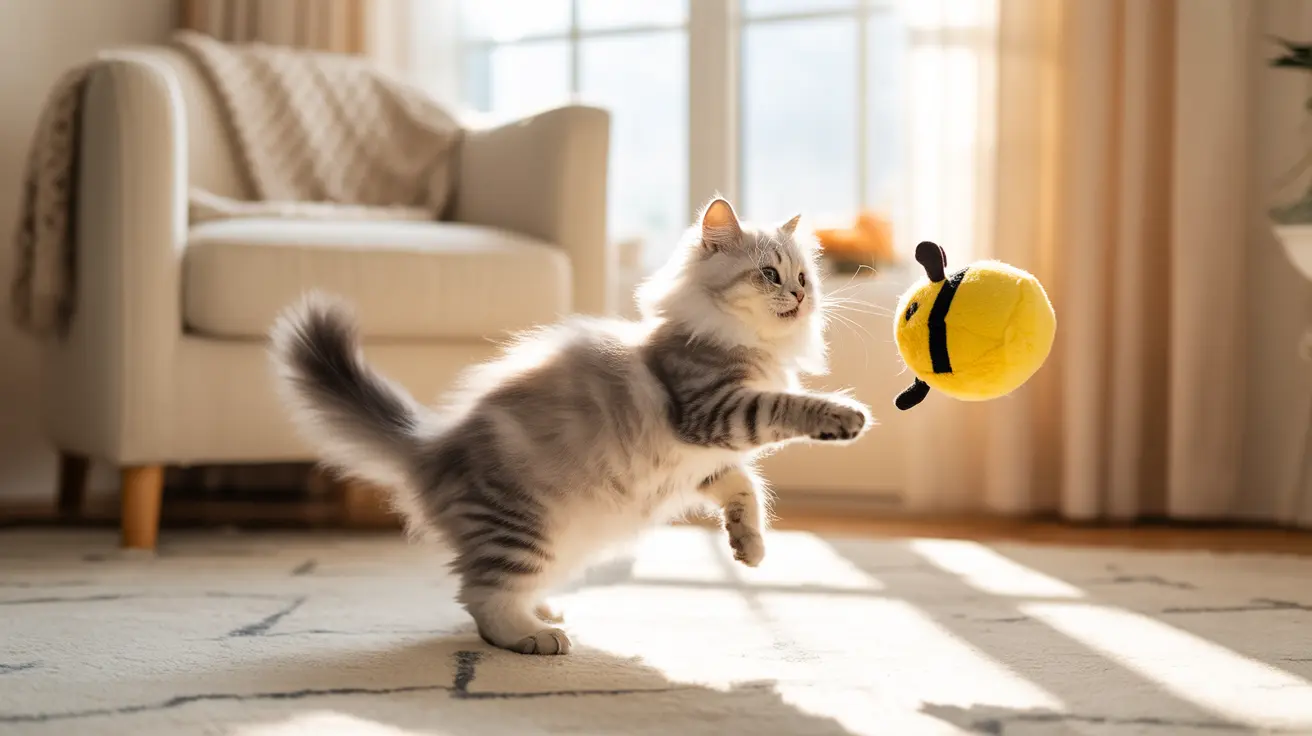The Natural Instinct Behind Back Leg Kicking
Cat back leg kicking is deeply rooted in their hunting instincts. In the wild, cats use this powerful movement to subdue prey after catching it with their front paws. The rapid kicking motion helps immobilize their target while protecting their vulnerable belly area from potential counter-attacks.
This behavior typically develops during kittenhood when young cats play with their littermates, helping them hone their hunting and self-defense skills for later life.
Common Triggers for Back Leg Kicking
Playful Behavior
Most commonly, cats kick their back legs during play sessions. Whether interacting with toys, other cats, or even their human companions, this behavior represents their natural hunting sequence in a safe, playful context.
Defensive Response
When cats feel threatened or overstimulated, they may roll onto their back and prepare to kick. This position allows them to use all four sets of claws and their teeth if necessary, forming an effective defensive stance.
Physical and Emotional Benefits
Back leg kicking serves several important purposes for your cat's well-being:
- Exercise and muscle maintenance
- Stress relief and energy release
- Practice of hunting skills
- Territorial marking through foot pad scent glands
- Social bonding during play
Creating Safe Outlets for Kicking Behavior
To help your cat express this natural instinct safely, consider these recommendations:
- Provide specially designed kicker toys
- Set up appropriate scratching posts
- Maintain regular interactive play sessions
- Create dedicated play spaces away from walls and furniture
When to Be Concerned
While back leg kicking is typically normal behavior, watch for these warning signs:
- Excessive aggression during play
- Frequent kicking of walls or furniture
- Signs of pain or discomfort
- Aggressive kicking directed at humans or other pets
Frequently Asked Questions
Why do cats kick their back legs, and what does it mean if they direct this behavior at me?
When cats kick their back legs at you, it usually indicates either playful behavior or overstimulation. If during petting, it may signal that they've had enough interaction and need space. This behavior mimics their natural hunting instinct but should be redirected to appropriate toys rather than human body parts.
How can I safely redirect my cat's bunny kicking behavior during play to prevent injury or damage?
Provide designated kicker toys, such as long stuffed toys or specially designed cat kickeroos. Never use your hands or feet as play objects, and always keep interactive play sessions controlled and structured.
What are the signs that my cat is overstimulated or feeling defensive when they start bunny kicking?
Watch for dilated pupils, flattened ears, tail twitching, and skin rippling along the back. These signs indicate your cat is becoming overstimulated and may need a break from play or interaction.
Can kicking be a form of territorial marking in cats, and how can I prevent unwanted marking in my home?
Yes, cats have scent glands in their paw pads that release pheromones when kicking. Provide appropriate scratching posts and marking areas throughout your home to satisfy this natural instinct and prevent damage to furniture or walls.
How can I provide appropriate outlets for my cat's natural bunny kicking instinct to reduce destructive behavior?
Invest in a variety of cat toys, including kicker toys, interactive wand toys, and scratching posts. Establish regular play sessions and create an enriching environment with climbing opportunities and hiding spots to prevent boredom-related destructive behavior.
Conclusion
Back leg kicking is a natural and important behavior for cats, rooted in their hunting instincts and serving multiple purposes for their physical and emotional well-being. By understanding this behavior and providing appropriate outlets, you can help your cat express their natural instincts while maintaining a harmonious household environment.






